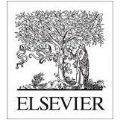Deep multi-view clustering methods have achieved remarkable performance. However, all of them failed to consider the difficulty labels (uncertainty of ground-truth for training samples) over multi-view samples, which may result into a nonideal clustering network for getting stuck into poor local optima during training process; worse still, the difficulty labels from multi-view samples are always inconsistent, such fact makes it even more challenging to handle. In this paper, we propose a novel Deep Adversarial Inconsistent Cognitive Sampling (DAICS) method for multi-view progressive subspace clustering. A multiview binary classification (easy or difficult) loss and a feature similarity loss are proposed to jointly learn a binary classifier and a deep consistent feature embedding network, throughout an adversarial minimax game over difficulty labels of multiview consistent samples. We develop a multi-view cognitive sampling strategy to select the input samples from easy to difficult for multi-view clustering network training. However, the distributions of easy and difficult samples are mixed together, hence not trivial to achieve the goal. To resolve it, we define a sampling probability with theoretical guarantee. Based on that, a golden section mechanism is further designed to generate a sample set boundary to progressively select the samples with varied difficulty labels via a gate unit, which is utilized to jointly learn a multi-view common progressive subspace and clustering network for more efficient clustering. Experimental results on four real-world datasets demonstrate the superiority of DAICS over the state-of-the-art methods.
翻译:深视多视群集方法取得了显著的绩效。 但是,所有这些方法都未能考虑到多视群集的难度标签( 训练样本的地面真实性不确定性)和多视群样样本的难度,这可能导致在培训过程中被困在落后的本地奥地马; 更糟糕的是,多视群样的难度标签总是不一致,这一事实使得处理起来更具挑战性。 在本文中,我们提出了一个新的深对立不一的认知性抽样(DAICS)方法,用于多视子群集的渐进性子空间分集(DAICS)方法。 一种多视(容易或困难)分解损失和特征相似性损失可能形成一个非理想的集群网络, 以便共同学习一个二进制分类器和深度一致的特性嵌入网络。 我们开发了一个多视群集样本的多视点抽样战略,从容易到难选取输入的输入样本样本。 我们用一个金色的分类方法, 用来通过一个更精确的分类方法, 来选择一个更精确的分类的分类。



